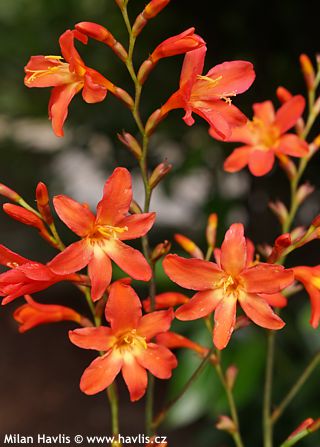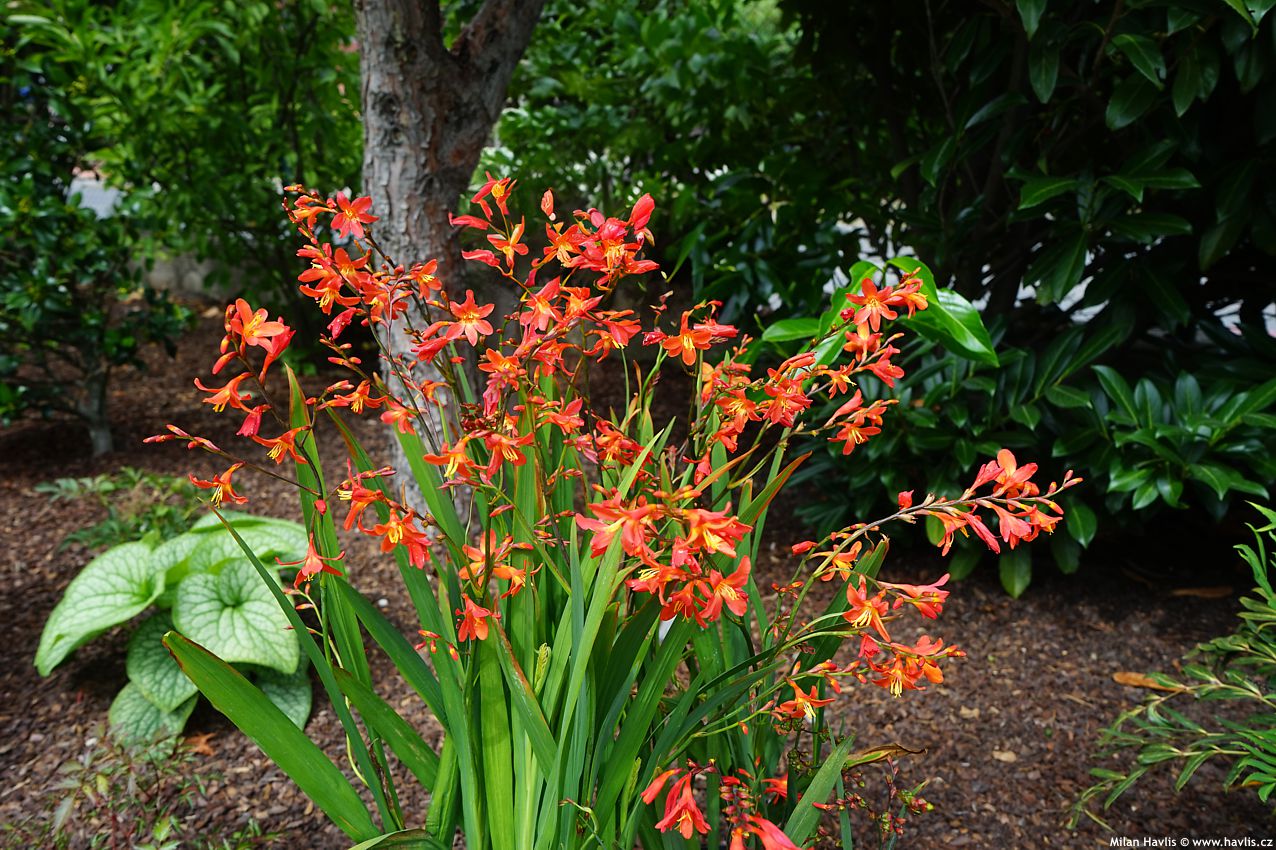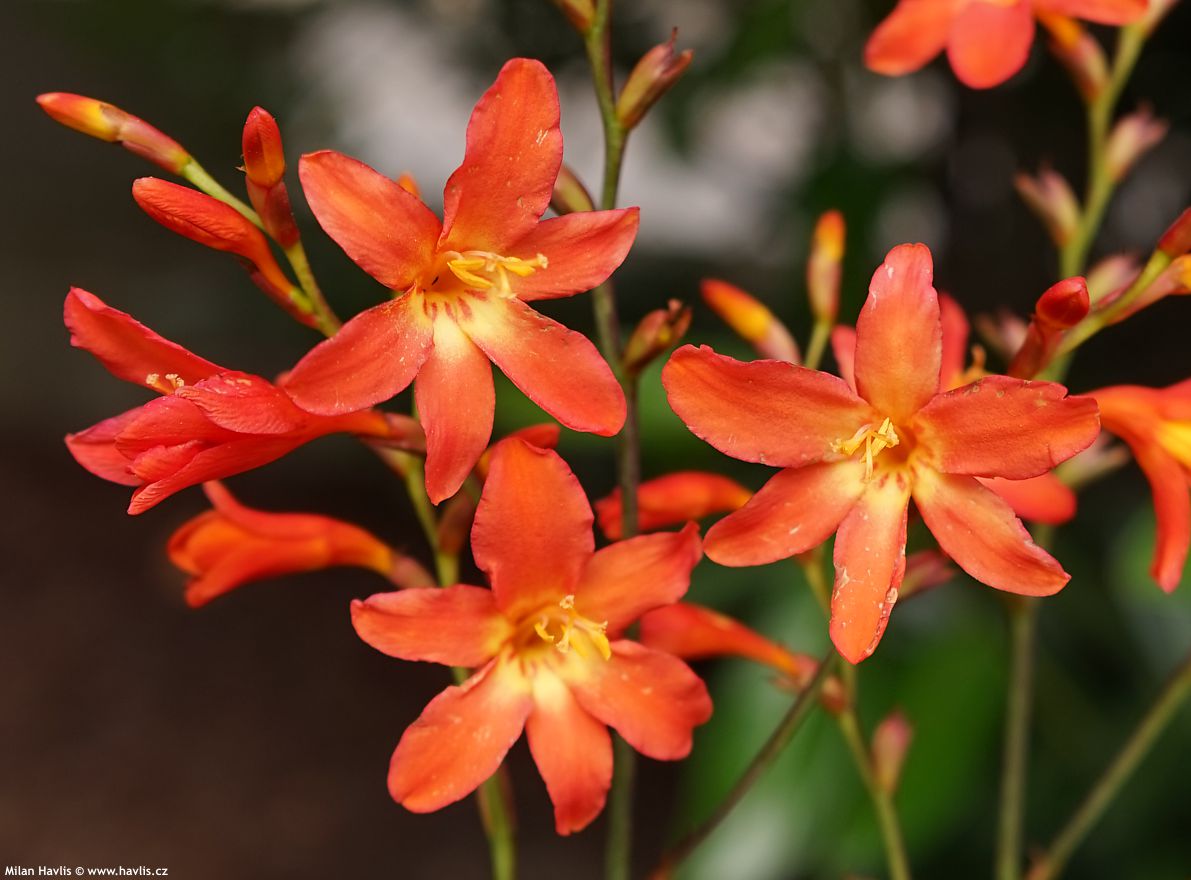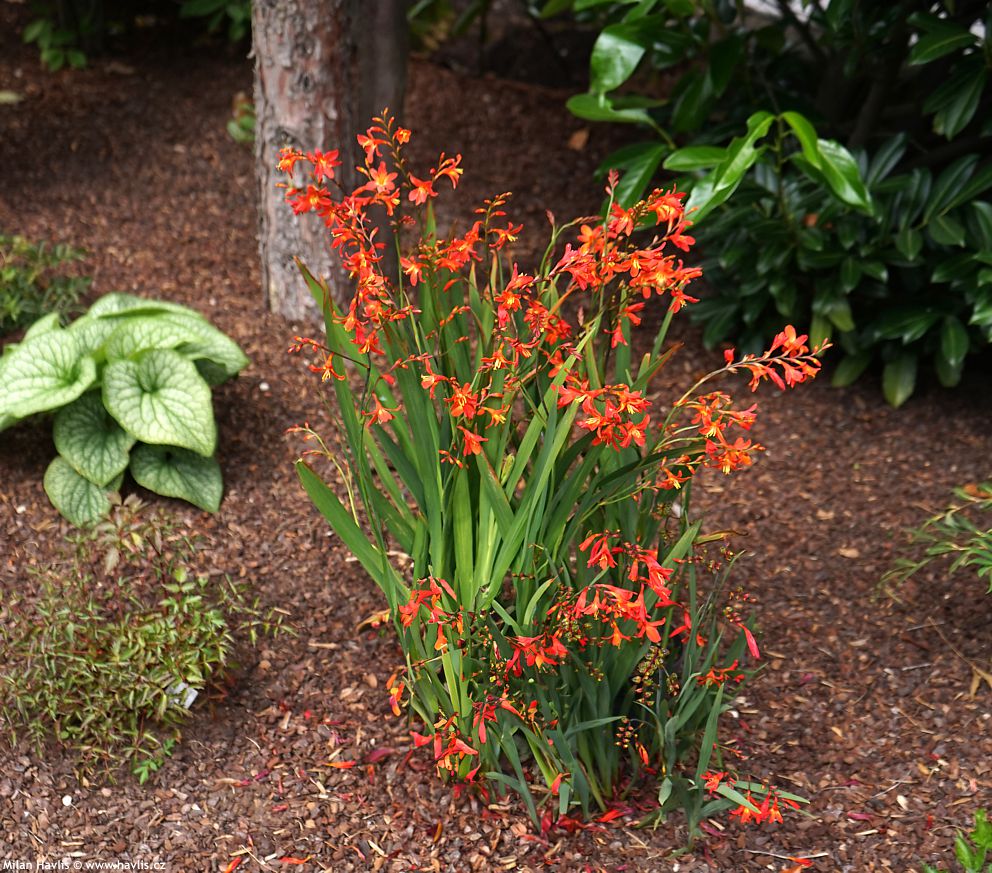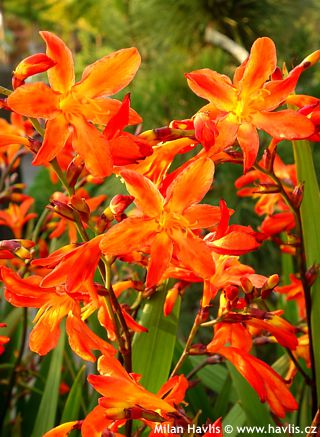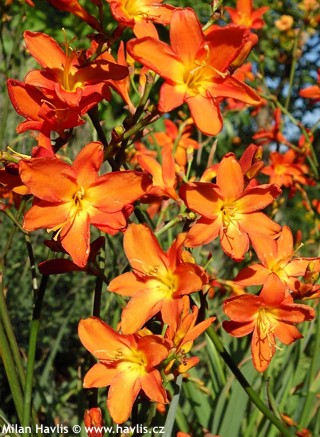Crocosmia 'MÉTÉORE' montbretia
Crocosmia
Montbretia is a gorgeous perennial of exotic appearance from southern and eastern parts of Africa. Despite its origin it proved hardy in temperate regions of the world and many varieties can withstand USDA zone 6 winters with occasional swings a few degrees lower. There are over 300 varieties listed and their number keeps on increasing. One wonders how yellow, orange, red, and their combinations can still bring something new.
Météore montbretia belongs among crocosmiiflora hybrids i.e. crosses of c. lutea and c. pottsii first bred by French botanist Victor Lemoine in 1880. 7 years later he introduced this midseason variety which brings flowers that combine golden and orange colour. They are large, narrowly bell-shaped, wide-open, and appear from the first decade of August and bloom for at least 4 weeks. It forms a compact, not bending clumps 50-60 cm tall. Sword-like leaves are rich green and confirm plant's affiliation with the iris family.
Montbretia does best in fertile, moist but well drained soil of any pH, preferably in full sun. Winter mulch is not necessary but may help newly transplanted plants to survive the first winter before the corms grow deeper to the soil. Hardy to about -25 °C (USDA zone 5b-6)
Last update 11-08-2021

































